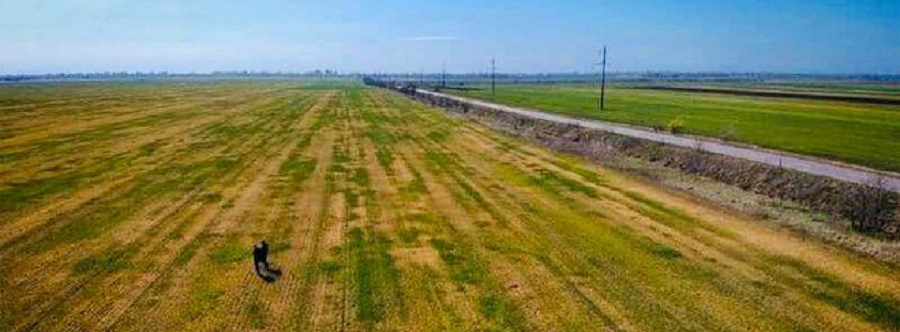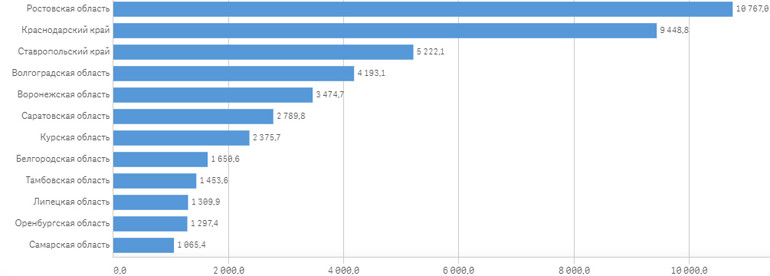Despite the ongoing drought beyond the Urals and in Siberia, harvest forecasts continue to grow.
An increase in the sown area for grain crops has an important effect on the growth of productivity.
In 2020, their area was 47.981 million hectares , last year it was estimated at 46.66 million hectares.
At the same time, the area under wheat crops increased to 29.421 million hectares in comparison with the indicators of 2019, which were at the level of 28.092 million hectares.
This area of wheat has become a record for the entire post-Soviet period, and in the near future experts expect an increase in forecasts for grain harvest, which will further strengthen Russia’s position in the world market and strengthen its influence on the export market as a whole.
So far, experts agree on forecasts for the harvest of 79.7 million tons , but, most likely, the forecast will move beyond the level of 80 million tons of grain, and the total harvest will add another 2 million tons.
The estimated volume of harvest, of course, is negatively affected by drought in such regions as Omsk, Chelyabinsk, Astrakhan, Novosibirsk regions and Altai Territory.
In the Omsk region, for example, 65 thousand hectares have already died, and over 400 thousand have been seriously affected. Emergency mode was introduced in 9 districts.

Despite the difficult weather conditions, Omsk farmers plan to harvest at least 3 million tons of grain. So far, the yield of spring crops is 16 centners per hectare, which is a good indicator for the existing weather conditions.
But the yield of winter wheat is already at the level of 44 centners per hectare, which once again proved that it is in this region that winter wheat gives a better result than spring wheat.
The Altai Territory may receive less than 2 million tons of grain due to drought. The estimated volume of harvest is 3.5 million tons, another 1 million tons of grain is stored at the elevators in the region.
Large holdings have already begun concluding contracts for the supply of grain from other regions: Novosibirsk and Omsk regions, Krasnoyarsk Territory.
The emergency regime in the Altai Territory operates in 59 municipalities and two urban districts.
In general, in Siberia, the expected decline may amount to 1.6 — 1.8 million tons.
But these losses will be partially compensated for by an increase in the harvest in the Volga region and the center of Russia.
In the center of Russia, an increase in harvest is expected by 4 million tons, the increase in the Volga region will be even larger — it is expected to harvest 16 million tons. Last year, the region harvested 11.4 million tonnes.
In the Voronezh region, harvesting is in full swing. Despite a slight delay, the farmers reached the level of last year, at the same time reaching a yield of 36.8 centners per hectare, which is 3 centners more than in 2019.
In the Orenburg region, 1,170,400 tons of grain have been threshed, with a yield of 27 centners per hectare.
In the Bryansk region, 180 thousand tons of grain have been processed. Harvesting of rape was completed in 15 districts.
In Russia as a whole, as of July 28, 2020, according to the Ministry of Agriculture of the Russian Federation, grain and leguminous crops were threshed from an area of 14 732.1 thousand hectares , which is 30.5% of the total area harvested.
In 2019, by this period, the same indicator amounted to 14 476.1 thousand hectares.
51 005.7 thousand tons of grain were threshed (2019 — 50 263.6 thousand tons).
Average yield was 34.6 centners per hectare (in 2019 — 34.5 centners per hectare).
According to Federal State Budgetary Institution «Center of Agroanalytics» , the overall picture of the threshed grain is as follows (thous. tons):

The likely rise in yield forecasts is putting downward pressure on global markets. On Monday, quotes in Chicago and Paris fell by 1.2 — 1.3%.

